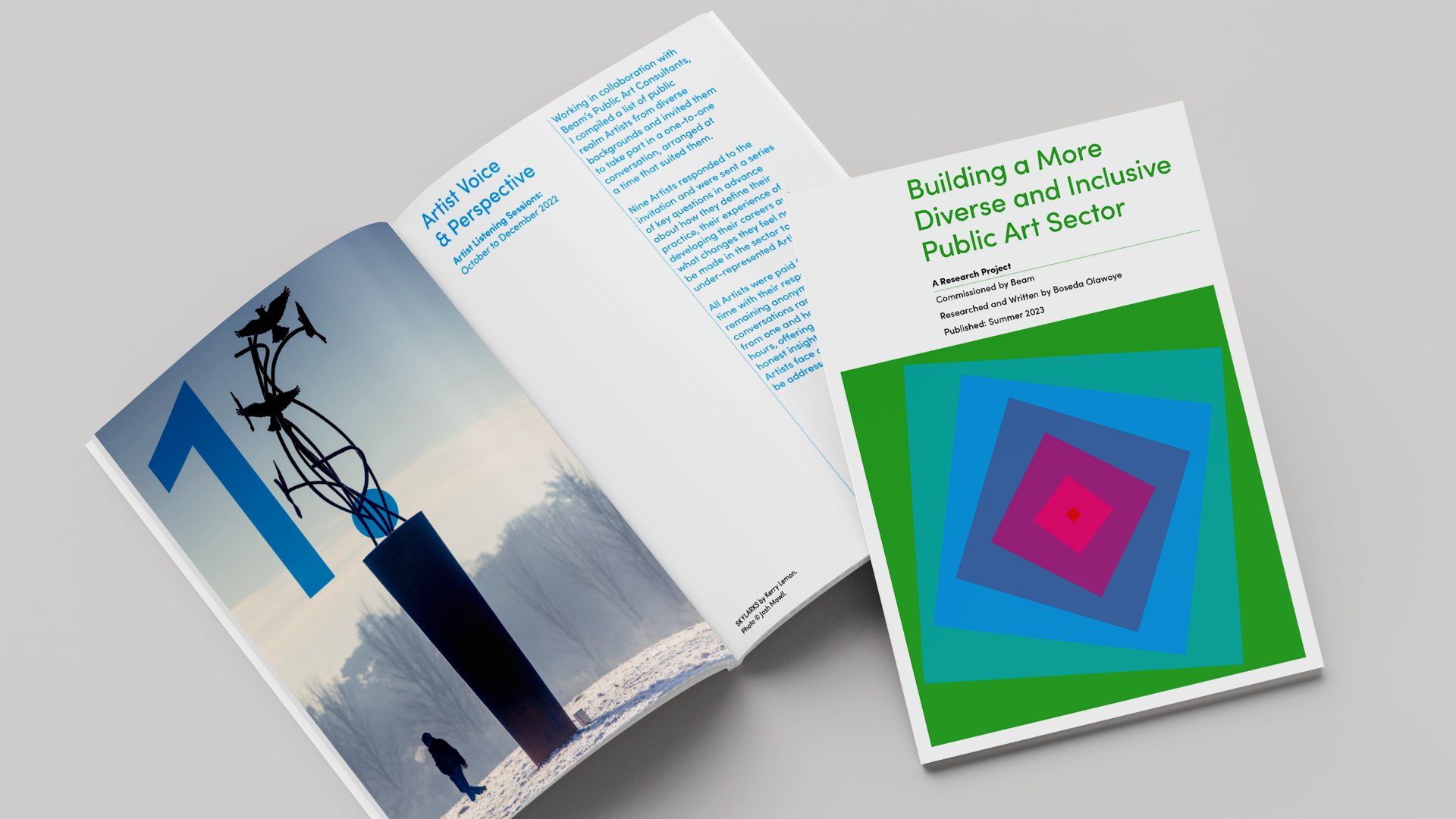We’re excited to launch a new report, commissioned by Beam and researched and written by Boseda Olawoye.
The research and report aims to explore and address why Artist commissioning opportunities in the area of public art do not seem to attract a diverse range of Artists from different backgrounds.
The need for this research has been informed by Beam’s own diversity monitoring, anecdotal evidence and the research of others in the sector. We wanted to ask – ‘How can we make the sector more fair and equitable?’
Over a period of 9 months, Boseda worked with Beam’s public art consultants and Board of Trustees, carried out desktop research and interviewed a network of diverse organisations and diverse Artists at varying career stages to explore the barriers they face in developing their practice in the public art sector.
The research raised more questions than answers. Who is commissioning the work? What is classed as art in the public realm? What kind of work are Artists from under-represented groups interested in creating?

Key findings and recommendations include:
- Terminology – many under-represented artists do not currently use or understand the term ‘public art’, which is a huge barrier for artists even considering applying for a public art commission. Artists describe their practice as either multidisciplinary, co-creating work with people in a place, or prefer not to be categorised preferring to list the different artforms they use.
- Demystifying ‘Public Art’ – the term ‘public art’ needs to be demystified, alongside clarity about the kinds of skills, knowledge and experience that are required and what to expect, particularly communicating your ideas to local authority officers and members, and other decision makers who are not from an arts background.
- Accessible Application Process – The commission application process for artists needs to be simplified with less written work.
- Engaging Communities – Artists delivering public realm projects for local authorities need to be commissioned earlier in the process to develop the work in consultation with communities and local residents to build trust, ensuring that they are actively involved in decision making about the work.
- Engaging Under-represented Artists – The public art sector needs to adopt a more targeted approach to engage and support under-represented artists working in or interested in applying for public realm projects.
- Local Authorities – There is a need to look at how local authorities commission public art and to encourage more effective and ethical ways of working both with the communities they seek to engage and artists to have a greater understanding of how to work with artists; be realistic about their role and to manage expectations.
- Supporting Artist Development – Early career artists from working class backgrounds need paid mentoring opportunities with established public realm artists to develop their skill sets and experience.
We recognise that through this report we have not drawn input from the full range of protected characteristics and intersectionalities, and recognise that whilst this research is an important starting point and a snapshot of a range of views, there is still much more to be done. This report serves as a useful starting point for further and continued exploration.
The full report can be DOWNLOADED HERE
Thank you to all of the Artists and producers from the arts and public arts organisations and consultancies for participating in these interviews and for sharing such honest feedback and insights.
An online discussion forum will take place on 2 October 2023, hosted by Beam, ixia and the Contemporary Visual Arts Network – click here to sign up.

Graphic design credit: Lee Goater

